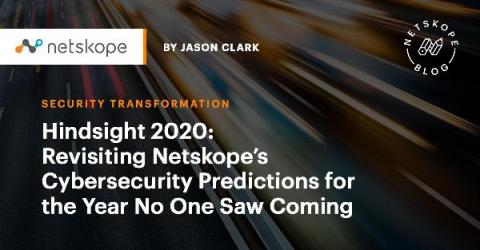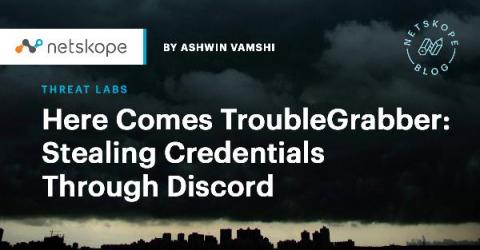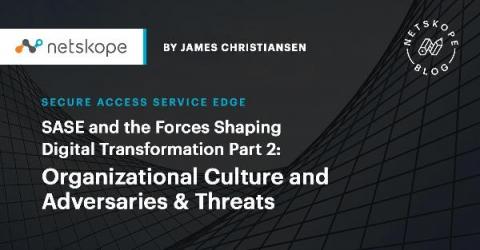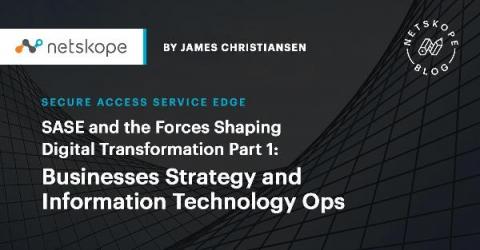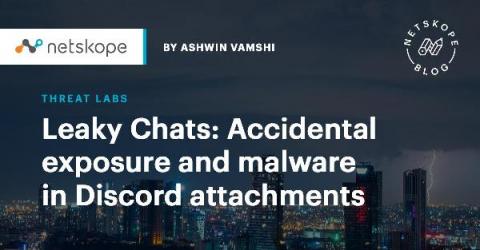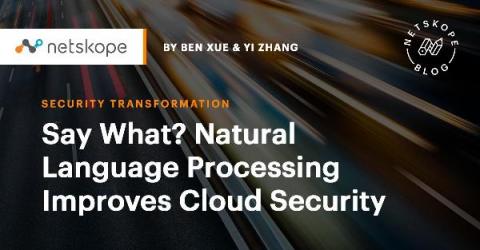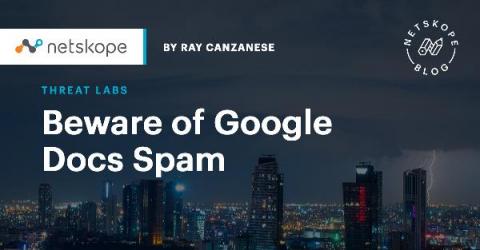Security | Threat Detection | Cyberattacks | DevSecOps | Compliance
Netskope
Hindsight 2020: Revisiting Netskope's Cybersecurity Predictions for the Year No One Saw Coming
2020, as a year, has been anything but predictable, but we’re proud to say we got even a few things right. Here’s a look back at some pretty big trends, a couple of things that sort of happened, and at least one big miss.
SASE and the Forces Shaping Digital Transformation Part 3: Government and Industry Regulations, and Global Social and Economic Forces
Regulatory authorities are still trying to catch up with cloud computing let alone the revolution that business digitalization is causing as there is no longer a data center to audit or a firewall log to review.
Here Comes TroubleGrabber: Stealing Credentials Through Discord
“TroubleGrabber” is a new credential stealer that is being spread through Discord attachments and uses Discord messages to communicate stolen credentials back to the attacker. While it bears some functional similarity to AnarchyGrabber, it is implemented differently and does not appear to be linked to the same group. TroubleGrabber is written by an individual named “Itroublve” and is currently used by multiple threat actors to target victims on Discord.
SASE and the Forces Shaping Digital Transformation Part 2: Organizational Culture & Adversaries and Threats
At the convergence of digital transformation, an industry-wide focus on SASE, and the effects of the continuing COVID-19 pandemic, there are key forces that security practitioners need to be aware of and operate within. This is the second blog in a series of three detailing these forces and how security leaders and practitioners can adapt to them in a digitally transforming, SASE-enabled world. This blog covers the forces of Organizational Culture and Adversaries and Threats.
See Netskope Prove It
SASE and the Forces Shaping Digital Transformation Part 1: Businesses Strategy and Information Technology Ops
At the convergence of digital transformation, an industry-wide focus on SASE, and the effects of the continuing COVID-19 pandemic, there are key forces that security practitioners need to be aware of and operate within. This is the first blog in a series of three detailing these forces and how security leaders and practitioners can adapt to them in a digitally transforming, SASE-enabled world. This blog covers the forces of Business Strategy and Information Technology Operations.
Leaky Chats: Accidental Exposure and Malware in Discord Attachments
Did you know that Discord attachments are publicly accessible? Did you know that even after deleting an attachment, the link to download the file is still active? In this edition of our leaky app series, we cover how sharing attachment links in Discord can cause accidental public exposure of data. We will also look into the malware abuse case of threat actors using Discord as a malware-hosting platform.
Say What? Natural Language Processing Improves Cloud Security
This is the third entry in a series of articles focused on AI/ML. Natural language processing (NLP) is a form of artificial intelligence (AI) that gives machines the ability to read, understand, and derive meaning from human languages. NLP powers many applications that we use every day, such as virtual assistants, machine translation, chatbots, and email auto-complete. The technology is still evolving very quickly.
Beware of Google Docs Spam
Netskope Threat Labs is warning users to be careful of spam messages being shared via Google Docs. The spam messages come in the form of a comment on a document or presentations and are sent by [email protected]. Both the comment and the document link the user to a spam or scam website. Because the messages are sent by Google Docs, it is likely that your spam filters do not detect and block these messages. In fact, docs.google.com may be explicitly allowed by your spam filters.



